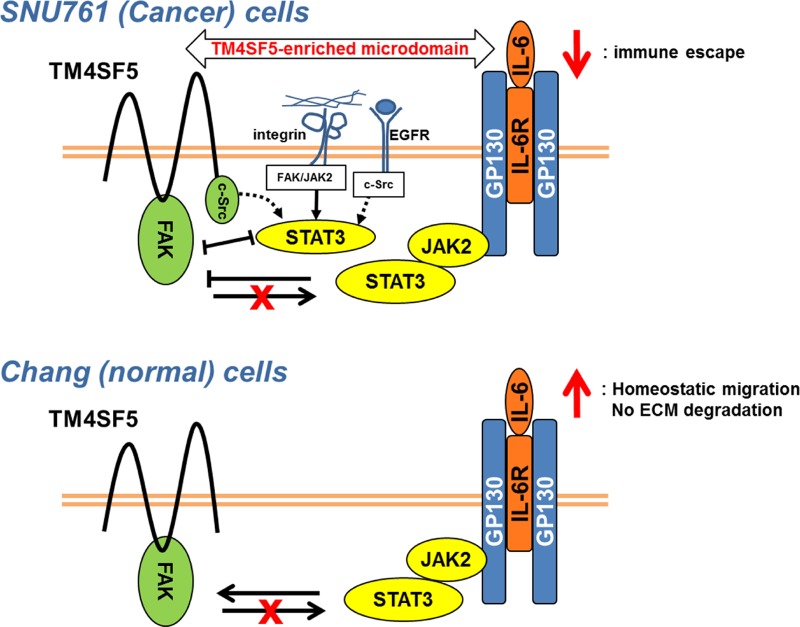FIG 7.
Cross talk between the TM4SF5/FAK and IL-6/STAT3 pathways. In normal and cancerous hepatocytes lacking TM4SF5 expression, IL-6 treatment causes FAK activation (not depicted). TM4SF5-expressing cancer cells exhibited IL-6-independent and -dependent STAT3 activity. IL-6-independent pY705 STAT3 presumably is influenced by the FAK/c-Src signaling activity caused by the membrane receptors within the TM4SF5-enriched microdomain and is competitive with TM4SF5-mediated FAK activity in adhered cells (10). (Top) IL-6-dependent STAT3 activity in the TM4SF5-positive cancer cells negatively regulates adhesion- and TM4SF5-dependent FAK activity. However, TM4SF5-expressing cancer cells express less IL-6 than TM4SF5-null cells, presumably leading to TM4SF5-mediated immune escape. (Bottom) In normal Chang-TM4SF5 cells, IL-6-dependent STAT3 activity results in TM4SF5/FAK activity and migration, suggesting a regulatory role for IL-6 in homeostatic migration but not in invasive ECM degradation. In both cell lines, FAK activity does not modulate IL-6-dependent STAT3 activity.

